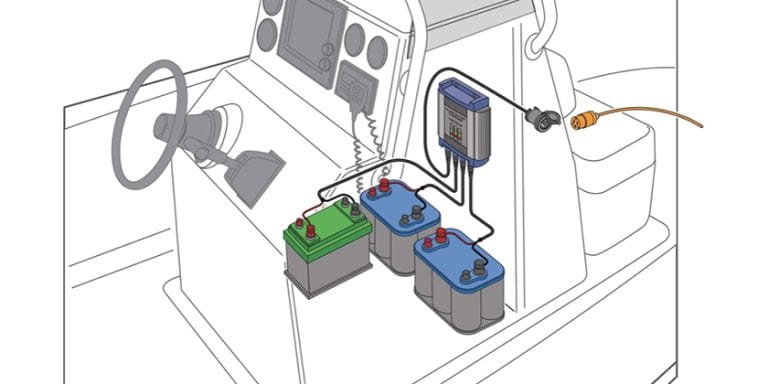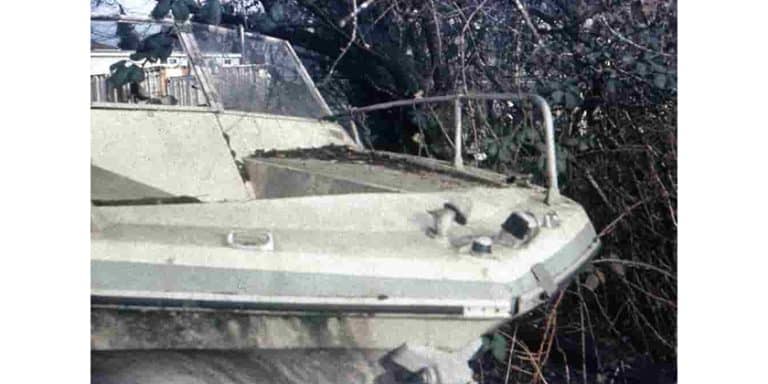Ask Andrew: Bilge Pumps – keeping water on the outside of the boat
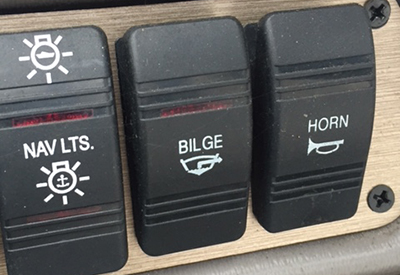
Nov 9, 2017
A simple on/off bilge pump switch
Water has a funny way of making its way into a boat: through through-hulls, stuffing boxes, leaks, hatches, windows and portholes – and it finds it’s way to the lowest point beneath the floorboards: the bilge.
A bilge-pump is mounted in the bilge, and pumps that excess water out of the boat. They are generally classified into two types: Manual and Electric.
A manual pump can be fixed-mounted (often in the cockpit or galley) and pumped by hand or with a foot pedal. Another type of manual pump requires the operator to hold the pump into the bilge water, and lay out a hose to direct the water overboard. In both cases, the operator has to do the physical work to pump the water out.
 Bilge pump packaging, showing specification: GPH and Head
Bilge pump packaging, showing specification: GPH and Head
Most modern sail and power boats have electric bilge-pumps installed. These pumps are mounted in the lowest part of the bilge (where water collects) and may be operated by a switch or a float. Floats work as an electric switch: when the water level rises, the float rises along with it. At a pre-determined height, the float causes the pump to turn on, water is pumped out, the float lowers, and the pump turns off again. It is ideal to connect this type of pump to a 3-position switch, so that the pump can be kept off (to save battery power when not plugged in to shore), turned on (to pump the bilge out manually), and set to float (so that the float operates the pump, as water flows in and out)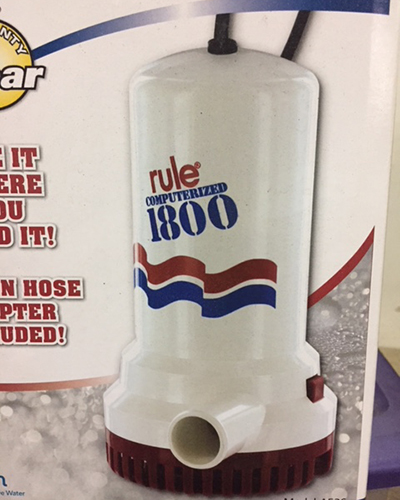 A computerized bilge pump with no external float required
A computerized bilge pump with no external float required
A typical arrangement involves a few parts, for particular reasons:
1) An electric bilge pump, on a float switch, in the bilge space where water collects. On a sailboat, this is typically in the centre of the boat, above the keel bolts. On a power boat, this is towards the stern, below the engines
2) A second bilge pump, in the engine space, on a simple on/off switch (not operated on a float). This is particularly important on a sailboat, to allow the operator to turn the pump on/off – but also prevents you from pumping dirty/oily water overboard.
3) A manual bilge pump, with the pick-up hose in the lowest part of the bilge, with the pump lever operated from the cockpit.
4) A manual/auxiliary hand pump. Just in case.
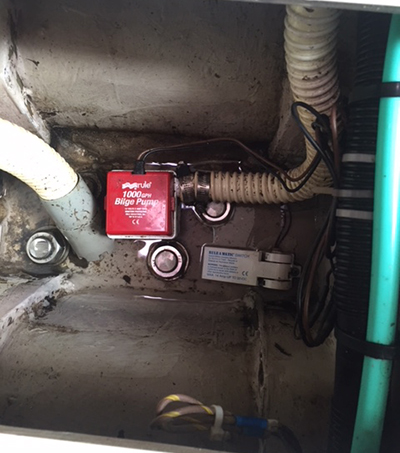
How big??
The most common question that I’m asked with respect to bilge pumps and their set-up and installation is ‘What size do I need?’.
a bilge pump with remote float switch
Pumps are measured in GPH – Gallons per hour – the number of gallons of water that the pump is capable of moving in one hour. Some pumps also have a height specification – called the ‘head’ (which tells you how high – from the bilge location to the through hull where water will exit the boat – the pump is capable of moving the water).
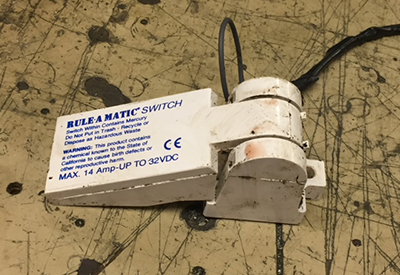 a float switch close up
a float switch close up
There are many factors that are intangible and are up for consideration: the risk of collision (what type of boating are you engaged in and where?), vessel construction (steel, wood or fiberglass), vessel condition (older, leaky boat?). Then there are the more tangible considerations: the number of through-hulls and their size (where water might enter the boat), the size and condition of the water tank (where water could escape from, flooding the boat), the boat’s displacement, etc.

At the end of the day, there is no firm rule. Good judgement and common sense should prevail, while keeping in mind the following:
A 1” hole, 12” below the water line will allow 717 gallons of water per hour into your boat. A 750 GPH pump is necessary to balance the inflow of water.
A 2” hole, 12” below the water line will allow 2910 gallons of water per hour into your boat. A 3000GPH pump is necessary in this case.
As hole size and water depth are increased, so will the amount of water entering.
Based on this, I always suggest: bigger is better.
I’m also often asked about bilge-pump care – here are a few quick maintenance tips:
1) Keep the bilge as clean and dry as possible. This will allow you to monitor how much water is coming in and out much easier than if there is constant standing water in the bilge. Keeping absorbent pads in the bilge will soak up any oil, grease, dirt or fuel that spills, preventing it from being pumped overboard when the pump is turned on.
Manual bilge pump, cockpit location
2) Keep the bilge free of debris – small bits of wire ends, zip ties, screws and dirt can make there way into the impeller blades of the bilge pump, and preventing in from turning. This will not only stop the pump from working, but it may also cause the pump to overheat and/or catch fire
3) Winterize your bilge pump – make sure the pump and hoses are emptied of water. An antifreeze solution can be run through the bilge pump to ensure that any remaining water doesn’t freeze
4) Don’t let the pump run dry. Bilge pumps are designed to be lubricated by water. If they are run dry for more than 20 seconds, they can overheat and stop working correctly.
5) Test your bilge pump and float switch periodically. Lift the float by hand to confirm that the pump turns on and off. Check the hoses for leaks. Make sure that the pump not only turns on and runs, but that it is actually pumping water overboard.
 Andrew McDonald is the owner of Lakeside Marine Services – a boat repair/maintenance firm based in Toronto. Andrew has worked in the marine industry for 12 years and is a graduate of the Georgian College ‘Mechanical Techniques – Marine Engine Mechanic’ program.
Andrew McDonald is the owner of Lakeside Marine Services – a boat repair/maintenance firm based in Toronto. Andrew has worked in the marine industry for 12 years and is a graduate of the Georgian College ‘Mechanical Techniques – Marine Engine Mechanic’ program.
Questions or comments for Andrew? Email him directly via: askandrew@lakesidemarineservices.ca

